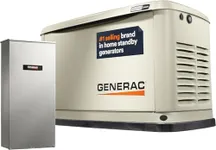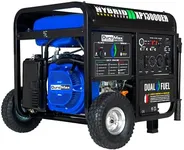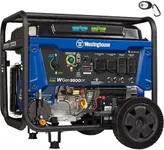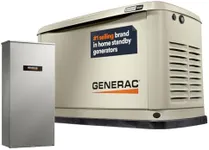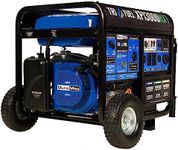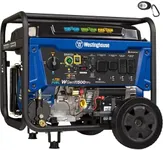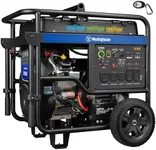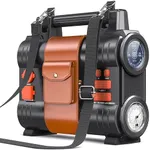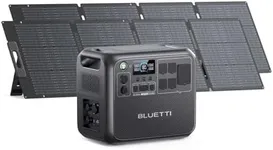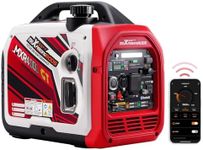Buying Guide for the Best Portable Whole House Generator
Choosing the right portable whole-house generator can be a daunting task, but with the right approach, you can find a model that fits your needs perfectly. A portable whole-house generator is a crucial investment, especially if you live in an area prone to power outages. It ensures that your home remains powered, keeping your essential appliances and systems running smoothly. To make an informed decision, you need to consider several key specifications that will determine the generator's performance and suitability for your home. Here are the most important specs to consider and how to navigate them.Power Output (Wattage)Power output, measured in watts, indicates how much electricity the generator can produce. This is crucial because it determines how many and what type of appliances you can run simultaneously. Generators typically range from 3,000 to 20,000 watts. For small homes or essential appliances, a generator with 3,000 to 5,000 watts might suffice. Medium-sized homes may require 5,000 to 10,000 watts, while larger homes or those with high power demands might need 10,000 to 20,000 watts. Assess your power needs by listing the essential appliances and their wattage to choose the right generator.
Fuel TypeGenerators can run on various fuel types, including gasoline, propane, natural gas, and diesel. The fuel type affects the generator's efficiency, cost of operation, and availability of fuel. Gasoline is widely available but has a shorter shelf life. Propane is cleaner and has a longer shelf life but requires a storage tank. Natural gas is convenient if you have a gas line but may not be available in all areas. Diesel is efficient and has a long shelf life but can be more expensive. Choose a fuel type based on availability, storage, and your preference for convenience and efficiency.
Run TimeRun time refers to how long the generator can operate on a full tank of fuel. This is important for ensuring continuous power during extended outages. Run times can vary significantly, from a few hours to over 24 hours. For short outages, a generator with a run time of 6-10 hours may be sufficient. For longer outages, look for models that offer 12-24 hours of run time. Consider your typical power outage duration and how often you can refuel the generator to determine the appropriate run time for your needs.
PortabilityPortability is a key feature of these generators, as it allows you to move the unit to different locations as needed. This is especially important if you need to transport the generator for camping or other activities. Look for features like wheels, handles, and overall weight. Lighter models with sturdy wheels and ergonomic handles are easier to move. If you plan to use the generator in multiple locations, prioritize portability. For stationary use, portability may be less critical, but still consider ease of movement for maintenance and storage.
Noise LevelNoise level, measured in decibels (dB), indicates how loud the generator will be during operation. This is important for maintaining a comfortable environment, especially if the generator will be used near living spaces. Generators can range from 50 dB (quiet) to over 80 dB (loud). For residential use, a quieter generator (50-65 dB) is preferable to avoid disturbing your household and neighbors. If noise is not a major concern, you may opt for a louder model. Consider where the generator will be placed and how much noise you can tolerate.
Starting MechanismThe starting mechanism determines how you start the generator. Common options include manual recoil start, electric start, and remote start. Manual recoil start requires pulling a cord, which can be physically demanding. Electric start uses a push-button or key, making it easier to operate. Remote start allows you to start the generator from a distance, adding convenience. Choose a starting mechanism based on your preference for ease of use and physical capability. Electric and remote starts are generally more user-friendly, especially for those who may have difficulty with manual starts.
Safety FeaturesSafety features are essential for protecting both the generator and your home. Look for features like automatic shutoff, overload protection, and low-oil shutoff. Automatic shutoff turns the generator off if it detects dangerous conditions, such as carbon monoxide buildup. Overload protection prevents the generator from being damaged by excessive power demand. Low-oil shutoff protects the engine by turning it off when oil levels are too low. Prioritize generators with comprehensive safety features to ensure safe operation and longevity of the unit.
